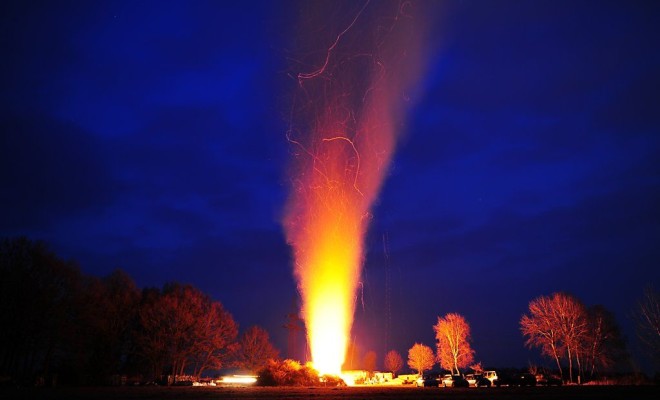There are over 16,000 historical markers in the state of Texas, and the Hill County boasts some of the most interesting, unique, and downright bizarre. Whether you are day tripping in the Hill Country, en route to another location, or the historical marker is your destination, these are some of the most intriguing ones you will find in all of the Texas Hill Country.
 mysanantonio.com
mysanantonio.com
History
7 Historical Markers in the Hill Country We Bet You Didn’t Know
1. Dead Man’s Hole – Historical Marker Number 11772
Located in Marble Falls, Dead Man’s Hole is believed to have been a dumping ground for over 17 bodies, including a Pro-Union Judge names John R, Scott. The hole was platted in 1968, but not before researchers discovered it to be 150 ft deep and 50 ft long.
2. Leanderthal Lady – Historical Marker 9260

Photo: Statesman.com
The Leanderthal Lady was discovered on December 29, 1982 in Leander, TX. She was about 30 years old at the time of her death and lived 10-13,000 years ago. She is one of the earliest intact burial sites ever discovered in the United Stated, thus making the area she was found in an incredibly important archaeological site.
3. Baby Head Cemetery – Historical Marker 9432

Photo: Atlasobscura.org
Local oral history claims this bizarrely named cemetery in Llano was given it’s one of a kind moniker after Native Americans killed a small child and left its remains in the mountains. A local creek and community were also given this eerie name in the 1870s, but all that remains of the settlement is Baby Head Cemetery.
4. The Phoenix Saloon – Historical Marker 18077

Photo: ThePhoenixSaloon.com
Built in 1877, this saloon in New Braunfels was known by many different names before the owner, William Gebhardt, settled on The Phoenix Saloon. It was a popular saloon and continues to be a great music venue and bar, but draws interest because it is believed to be the birth place of chili powder. Another owner, John Sippel, welcomed women into his bar, which was unheard of at the time. He also built a pool and fountain in the courtyard, that housed fish and alligators.
5. The Victory Grill – Historical Marker 15520
Built in Austin in during World War II, the Victory Grill filled a much needed void for African American servicemen. Segregation prevented them from attending most civilian restaurants and recreational facilities, and Austin Civic Leaders called on the city and local business owners to provide businesses for our servicemen. Johnny Holmes heard the call and opened the Victory Grill. It became a local hub, not only providing food, but also became a well known venue for blues and jazz. Following desegregation, business slowed and the Victory Grill closed its doors in 1973. After Holmes passed away, his children worked hard and reopened the doors to the Victory Grill in 2001 and music can be enjoyed again from this interesting historical marker in the Texas Hill Country.
6. Community of Nameless – Historical Marker 14580

Photo: Cntraveler.com
Back in the late 1800s, a growing community in Travis County applied to have a post office built. After the Postal Authority rejected six different proposed names, the citizens responded “let the post office be nameless and be damned.” The Postal Authority accepted the implied handle of Nameless and the bizarrely named community and proceeding historical marker was born.
7. The Easter Fires – Historical Marker 10033

Photo: MySanAntonio.com
It was March 1847 in Gillespie County, the Comanche Indians and the German Settlers had just signed a major peace treaty, and the Comanche Indians marked the event by lighting huge signal fires on the hills around Fredericksburg. One inventive mother told her frightened children that the smoke was coming from pots where the Easter Bunny was dyeing eggs with flowers. The fable was spread to other children and each year they had continued peace with the Native Americans, the settlers would light fires to mark the anniversary. The tradition continues on Easter Eve and is accompanied with a pageant each year.
The Texas Hill Country is rich with history and thanks to the Texas Historical Commission we can learn about so much of its interesting and sometimes bizarre past. Next time you’re driving down one of the back Hill Country roads and see a Historical Marker sign, stop and read it and find out more about our wonderful states history.


